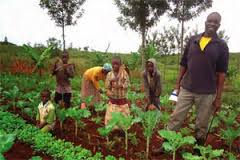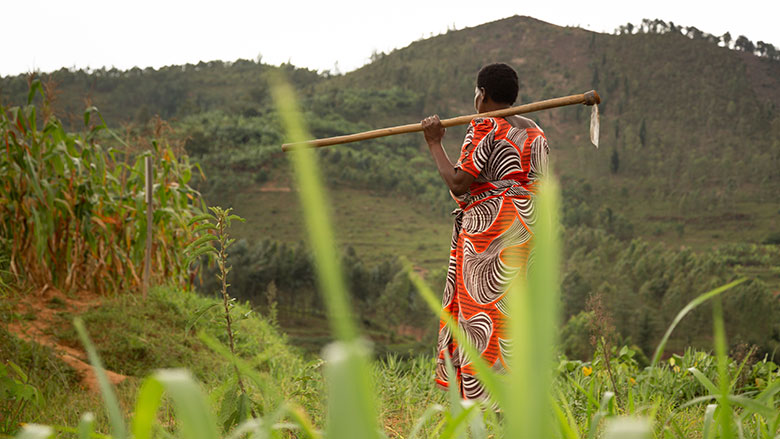Discovering the Key Differences In Between Commercial Farming vs Subsistence Farming
Discovering the Key Differences In Between Commercial Farming vs Subsistence Farming
Blog Article
A Comprehensive Appearance at the Challenges and Benefits of Modern Agriculture
Modern farming stands at the crossroads of advancement and sustainability, presenting a wide variety of difficulties and chances. The path onward demands a careful assessment of these characteristics, welcoming stakeholders to take into consideration the potential for transformative change in agricultural techniques and policies.
Technical Advancements in Farming
Technical innovations in farming have transformed the agricultural sector, driving boosted efficiency and efficiency. Innovations such as precision automation, biotechnology, and farming have changed standard farming practices, permitting even more sustainable and lucrative operations. Accuracy farming uses GPS technology, sensors, and information analytics to optimize field-level monitoring concerning plant farming. This technique allows farmers to use inputs like water, fertilizers, and pesticides more deliberately, decreasing waste and lowering costs while enhancing returns.
Automation in farming has even more propelled the industry onward, with the introduction of autonomous tractors, drones, and robotics. These technologies reduce labor needs and boost functional speed, enabling prompt planting and harvesting. Drones, in specific, provide valuable aerial images and data, aiding farmers in keeping an eye on crop health and wellness and spotting problems early.
Biotechnology has actually also played a crucial function ahead of time farming practices. Genetically customized microorganisms (GMOs) have been established to improve crop resistance to pests and conditions, reduce reliance on chemical treatments, and enhance nutritional material. This modern technology adds to food safety and fulfills the needs of a growing worldwide populace. Collectively, these technical improvements have actually laid the foundation for a much more lasting and durable farming future.
Environmental Challenges
Farming faces several ecological difficulties that threaten its sustainability and efficiency. The lasting viability of agricultural land is endangered, requiring the adoption of even more lasting techniques.
Water scarcity is another significant difficulty, specifically in regions where agriculture heavily counts on irrigation. Climate change is intensifying this issue, altering precipitation patterns and boosting the frequency of dry spells. Effective water administration systems, such as drip irrigation and rainwater harvesting, are vital to reduce these results, but their application remains uneven across different regions.
Moreover, agriculture is both a victim and a contributor to environment adjustment. Dealing with these environmental obstacles is essential for making sure a sustainable farming future.

Financial Influences
The financial influences of modern-day agriculture are multifaceted and profound, affecting both regional and worldwide markets. Advances in innovation and manufacturing methods have considerably increased farming performance, leading to much more effective food supply chains and reduced prices for customers.
The capital-intensive nature of contemporary agriculture needs significant investment in equipment, plant foods, and genetically changed seeds, which can be monetarily difficult for small-scale farmers. In addition, worldwide market changes can affect the earnings of agricultural exports, making economies reliant on farming prone to financial instability.
Additionally, aids and trade plans in industrialized countries can distort market value, influencing affordable balance and possibly moved here disadvantaging farmers in establishing nations. Generally, while modern farming drives economic development, it also demands browsing intricate economic landscapes to make certain lasting and equitable development.
Social Implications
While contemporary farming has actually brought around substantial innovations, it additionally provides various social effects that necessitate factor to consider. One significant concern is the variation of small-scale farmers as a result of the rise of huge agricultures. As corporate farming entities progressively control the agricultural landscape, smaller sized ranches frequently battle to contend, bring about the disintegration of country areas and conventional farming methods. This change can result in a loss of regional expertise and cultural heritage that smaller farms sustain.

Such techniques may also restrict consumer choices and lower the capability of regional neighborhoods to manage their food sources. As these social effects unravel, it becomes critical to address them to make sure lasting and equitable agricultural development.
Future Instructions
Looking ahead, several promising opportunities for contemporary agriculture could address the obstacles dealt with today while promoting lasting growth. Advancements in modern technology, such as try this accuracy agriculture, provide the potential to maximize source use and boost effectiveness. By utilizing data analytics and equipment discovering, farmers can make enlightened choices pertaining to plant monitoring, bring about reduced input prices and reduced environmental impact. The assimilation of sustainable power sources into agricultural techniques can considerably lower reliance on fossil fuels and add to lower greenhouse gas discharges.
Biotechnology also holds enormous assurance for the future of farming. Genetically visit this website customized microorganisms (GMOs) and genetics editing techniques, like CRISPR, can enhance plant resilience versus environment modification, bugs, and illness, therefore enhancing food safety and security. Moreover, diversifying plant selections to consist of more climate-resilient and nutrient-dense choices can boost both eco-friendly stability and human nutrition.

Verdict
Modern farming, identified by technical improvements, presents both possibilities and challenges. commercial farming vs subsistence farming. Addressing these complexities needs a transition in the direction of lasting methods that stabilize productivity with ecological stewardship and social equity, consequently ensuring a resistant future for international farming systems.
Modern farming stands at the crossroads of development and sustainability, providing a plethora of possibilities and difficulties. Furthermore, worldwide market variations can influence the earnings of farming exports, making economic climates reliant on agriculture vulnerable to financial instability.
Additionally, the intensive usage of modern technology and mechanization in agriculture has actually led to a decrease in farming work chances.Looking ahead, several appealing methods for modern farming could attend to the difficulties faced today while cultivating sustainable growth. commercial farming vs subsistence farming.Modern farming, characterized by technical innovations, offers both obstacles and chances
Report this page